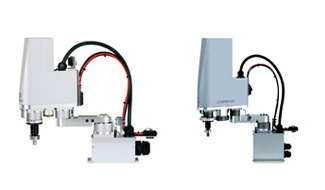
To simplify and accelerate the process of DC motors sizing, selection, dynamic analysis and evaluation for different motion applications, different mathematical models in terms of output position, speed, current, acceleration and torque, as well as corresponding simulink models, supporting MATLAB m.file and general function block models are to be introduced. The ultimate goal of this paper addresses different approaches used to derive mathematical models, building corresponding simulink models and dynamic analysis of the basic open loop electric DC motor system, used in mechatronics motion control applications, particularly, to design, construct and control of a mechatronics robot arm with single degree of freedom, and verification by MATLAB/Simulink. An accurate modeling, simulation and dynamics analysis of actuators for mechatronics motion control applications is of big concern. In this project, each mode of operation is run individually and an automatic transformation mechanism between configurations has not been developed, and this will form part of the future recommended work.įundamental concern in mechatronics applications, where placing an object in the exact desired location with the exact possible amount of force and torque at the correct exact time is essential for efficient system operation. Following completion of the simulation phase and ensuring that the results adhere to the operating limits of the hardware, the motion algorithm has been coded in C programming and implemented on the microcontroller. The simulation has been carried out before implementing the control algorithms on the actual system so as to avoid any mistake that may cause damage to the hardware. However, in steering mode the link was set at constant angle to act as a suspension for skid steering operation. Similarly in walking mode, the arms were converted into legs to allow the walking locomotion be implemented.

Hence, in climbing mode the arm of SR-X was simulated to grip the pole at a certain angle for each link. This project has focused on the robot configuration that allows a certain locomotion to be applied. As the design of the SR-X arm implicates two link manipulator, the link measurement has been used to simulate the system in MATLAB for locomotion analysis. From the virtual design of actual robot, the measurement needed for further analysis can be obtained.


 0 kommentar(er)
0 kommentar(er)
